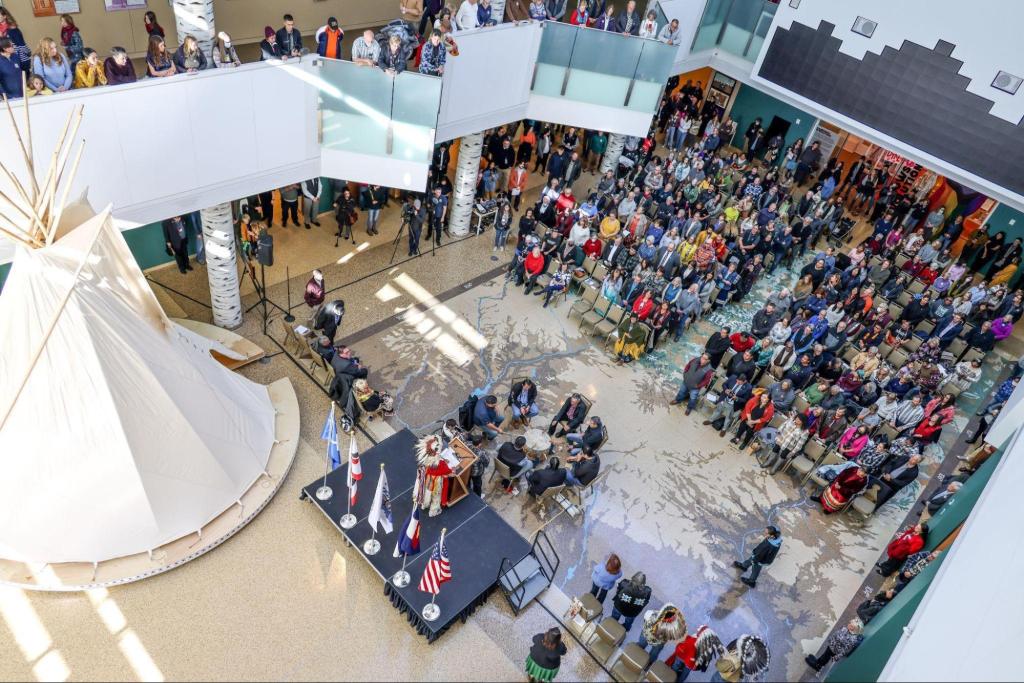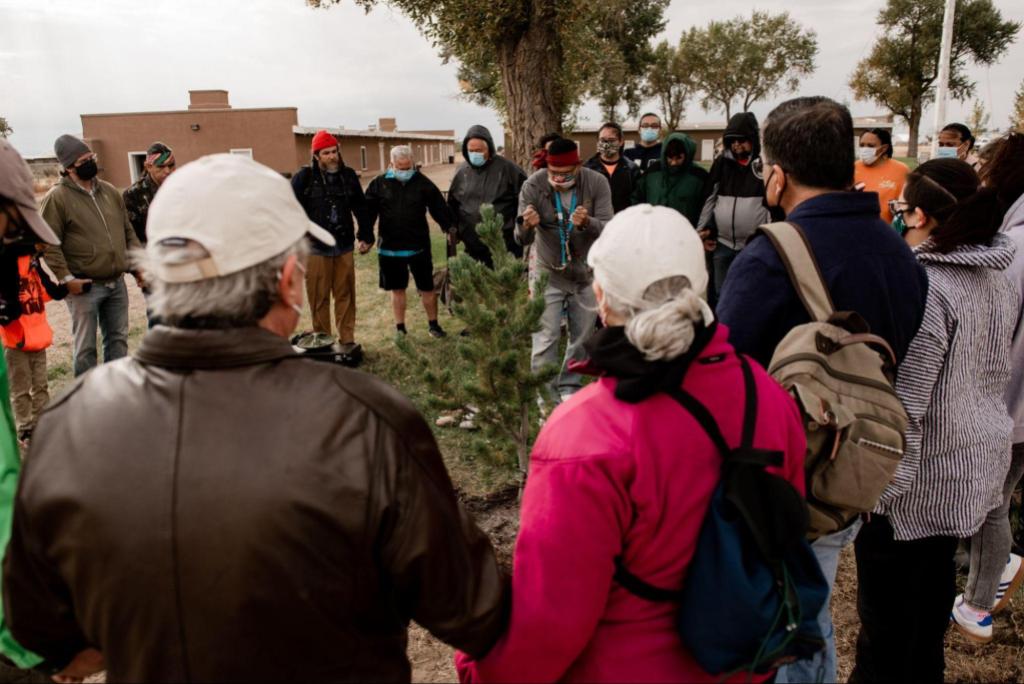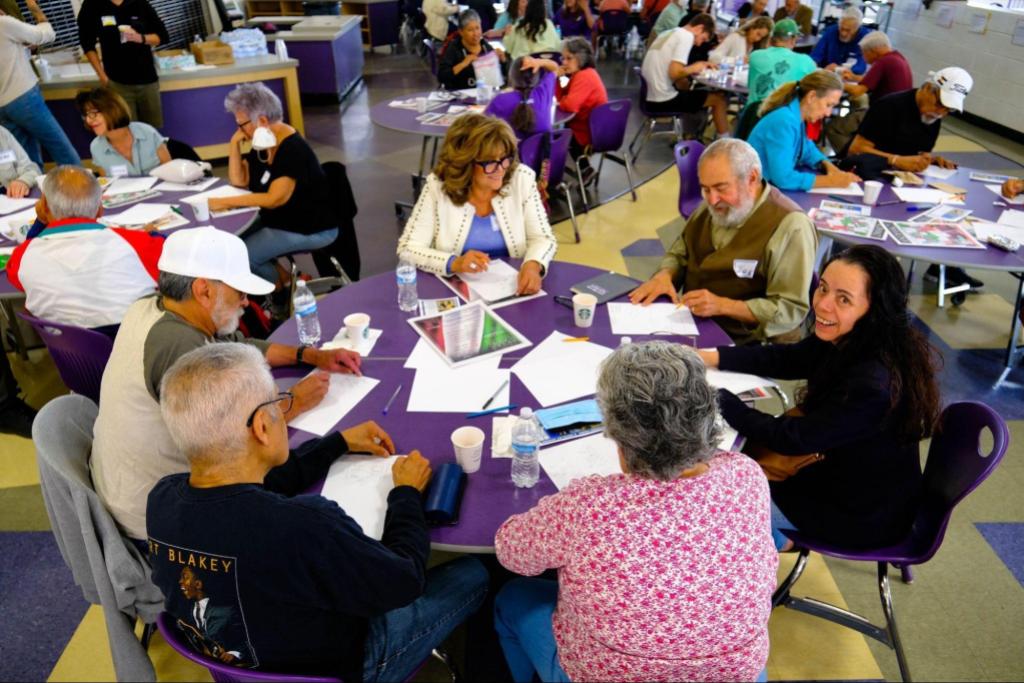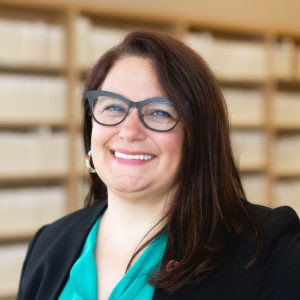
You could almost hear the cheers across the museum field early in March when Colleen Dilenschneider’s email hit inboxes announcing that “More People Trust Museums Now Than Before the Pandemic.” The numbers are compelling—nearly 75 percent of Americans trust museums, which is a jump of almost 10 percent in the last few years.
The data demonstrates a few broad reasons why this trust is growing. People think museums are solid sources of information, and they noticed the impact of all our pandemic digital pivoting. The opportunity to prove our resonance beyond our walls reverberated in meaningful ways.
But I’m certain the public’s growing trust also comes from deeper reasons than these. In recent years, museums have begun to rethink what makes them trustworthy, moving beyond being reliable repositories of information and into co-creative community relationships. At History Colorado, we have been actively working to build better and deeper relationships with the communities we serve, and discovering what those relationships allow us to achieve together. We have been listening, really listening, to knowledge-keepers around the region. We’ve been honest and vulnerable about what we do not know, what we still can learn, the mistakes we have made in the past, and how we plan to do better. We are not striving for perfection; rather we are dynamic, forever learning, and ready for the messy stuff that comes with our work.
Here are a few of the lessons we’ve learned about what it takes to build trust with your communities.
Trust comes from being honest about your mistakes.

We recently opened an exhibition on the 1864 Sand Creek Massacre, the deadliest day in Colorado’s history, when the US Army attacked a camp of peaceful Cheyenne and Arapaho people. This was our second attempt at producing an exhibit on this history, after we had to shutter our first in 2012 because of vocal and valid critiques that we did not properly consult with the Cheyenne and Arapaho Tribes in telling the story. Since then, we’ve spent the last decade (re)building relationships, letting go of what we thought we knew about this history, and establishing a framework of co-authorship.
The process required sharing authority over every aspect of the exhibit and de-centering History Colorado’s collections, knowledge, and previous work to make space for additional voices. When we opened the new exhibition this past November, we did so first for members invited by the three descendant tribes. It wasn’t until the next day that we hosted a large ceremony with the public to honor the history and invite our wider community to witness and learn.
Trust comes from admitting what you don’t already know.

At our Fort Garland Museum, an 1858 ancestral adobe military fort in southern Colorado, History Colorado is beginning to examine the painful history of Indigenous captivity, a centuries-long system that has been called “the other slavery.” This history has long been kept within closely held genealogies in Southern Colorado and northern New Mexico, but has been obscured in our national story in ways that have been harmful to families and cultural identities. While there is excellent scholarship on the topic, so much of the knowledge lives with people in our communities. Rather than taking a traditional approach to study and synthesize, we recognized that we could serve a different role—not as experts, but as conveners facilitating collective knowledge-building through descendant memory workshops.
We worked with genealogists and the landscape artist jetsonorama/Chip Thomas to fuse archival sources into the spaces and experiences that evoke this history. On the adobe walls of Fort Garland’s structures, Thomas installed large-scale historic photographs and reproductions from a historic census-like document bearing this title: “List of Indian Captives, acquired by purchase and now in the services of the citizens of Conejos (Costilla) County, C.T. (Colorado Territory) as taken and rendered by Lafayette Head, U.S. Indian Agent for the Tabaguache Utah Tribe of Indians. July, 1865.”
We didn’t wait to be experts on the subject, or even believe we could be experts on such complicated and sometimes-personal history. But we started a needed conversation, which affirmed for families that this history they knew was real.
Trust comes from trusting.
In April 2021, we digitized Denver’s Ku Klux Klan membership ledgers, which include thirty thousand names and addresses of historical members of the white supremacist terror organization. The ledger books have been in our collection for many years, and have even been on exhibit and available in our research center. But we wanted to make the documents far more accessible to a public that is increasingly interested in unraveling the historic foundations of racism.
We scanned, transcribed, and released the raw ledger data in searchable PDF format on our website. It was full of names and addresses from a century ago that we mapped onto modern city maps. While we did offer resources for more reading and context, we did not put forth a tidy interpretation to make the difficult information more digestible. We trusted the public to explore the records and make their own connections, conclusions, and inquiries. The results were powerful. The records induced leading civic organizations to acknowledge that their founders were in the ledgers, and facilitated a collective recognition that Colorado has not been immune to racist systems and practices over its history, despite its geographical distance from the slaveholding South. The impact was more significant when we let the public interpret the data themselves than it would have been if we interpreted it on their behalf.
Trust comes from recognizing community knowledge.

Our Museum of Memory program centers on the idea that we—the institution—are not the only knowledgeable bearers of Colorado history. This public history initiative acknowledges that the official historic records have traditionally excluded many histories, and celebrates the many ways Colorado communities have preserved their knowledge and culture despite that. Members of twelve Colorado communities are helping to inform new community-based archives and exhibitions, and using history to advocate for community needs today. Just last week, for example, I led a workshop for a community displaced fifty years ago by the Denver Urban Renewal Authority. One of the participants told me, “Every time we meet there is a little more healing.” After decades of exclusion from official history institutions like ours, communities like these are justifiably wary of our intentions. Instead of expecting trust, we must work to earn it, and be grateful when they agree to work with us.
The challenges and upheaval in the last few years required museums to show vulnerability in ways we had not before. We were in crisis and had to move quickly. We rarely had the opportunity to polish our thoughts and programs and make them pretty for a public in survival mode. But because it wasn’t possible, we learned that it wasn’t as necessary as we’d thought. The public was looking for answers, and we showed up in raw, meaningful, and resonant ways when the communities we love needed us. Let’s not snap back to our pre-2020 attempts at perfection, as paternalistic knowledge-holders.
Our team will be sharing about these projects and more throughout the AAM 2023 conference in our beloved Denver. Join us: Public History Without a Playbook: Rising to the Moment in Polarized Times on May 20 and Coauthoring Community History with Museum of Memory Practitioners on May 21. You can also visit us in person!









This is terrific, and says a great deal about the present and future of public history — and a real break with its past. In my opinion, this is the heart of a new public history. Museums are — or should be — well on their way to transforming into living storytelling centers, where understandings of the past are mutually constituted and constantly evolving to connect audiences with an understandable, recognizable present, as this piece points out. Hurrah for that, in all kinds of ways.
This is super and vitally important in this era. Everyone should read it and discuss. Many thanks.
Amazing initiatives Dawn. This is what a museum is for.
This is an incredible article on the power of sharing vulnerability. Whenever someone enters the museum (or engages in anything creative), they share their vulnerability—and that requires trust. Reciprocating vulnerability (which requires us to trust our patrons and ourselves) develops strong, lateral relationships that matter both individually and as institutions.